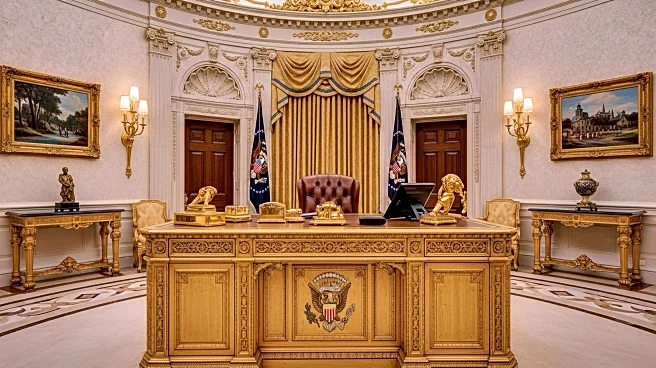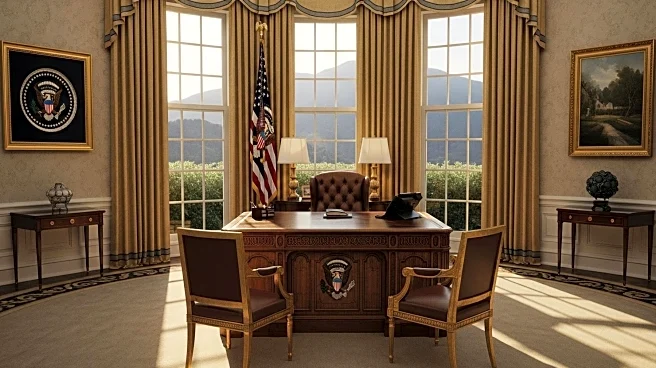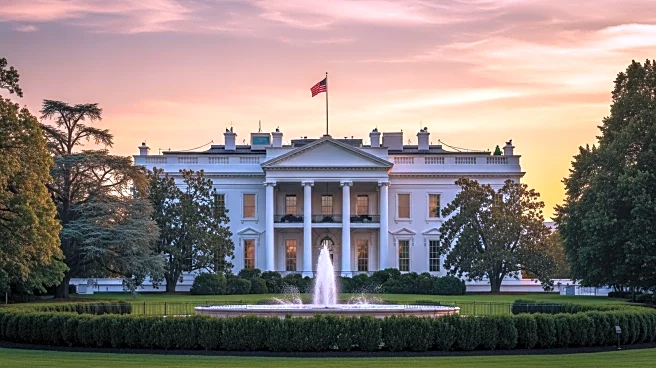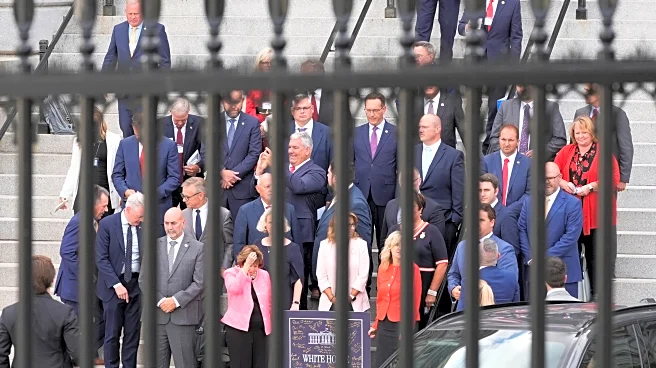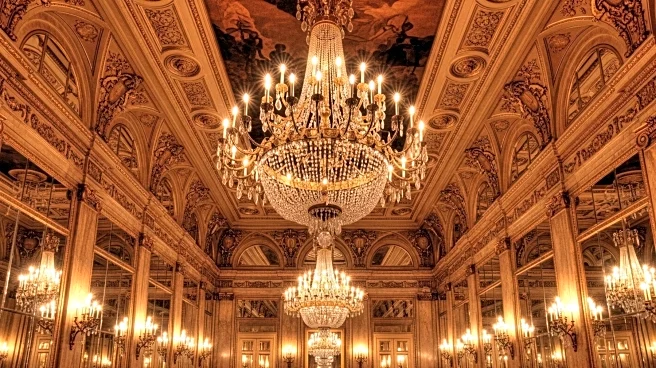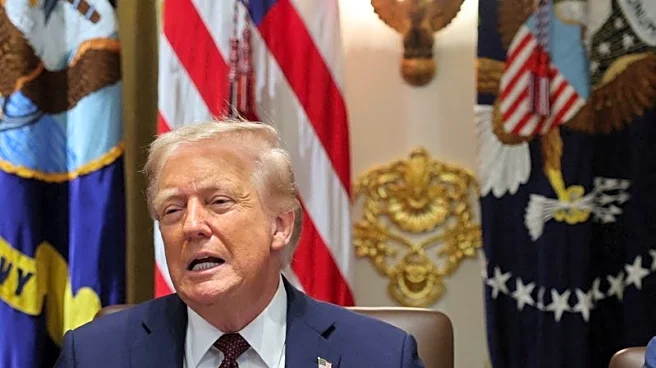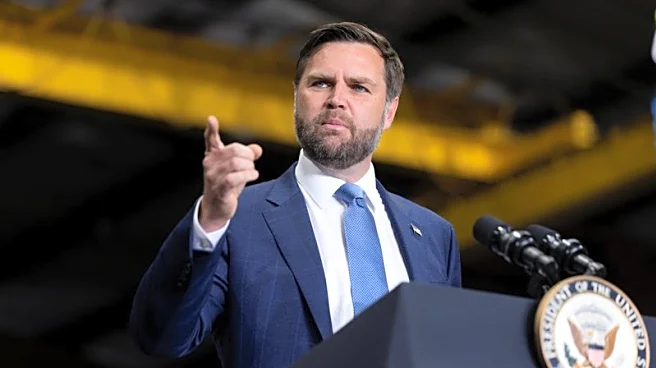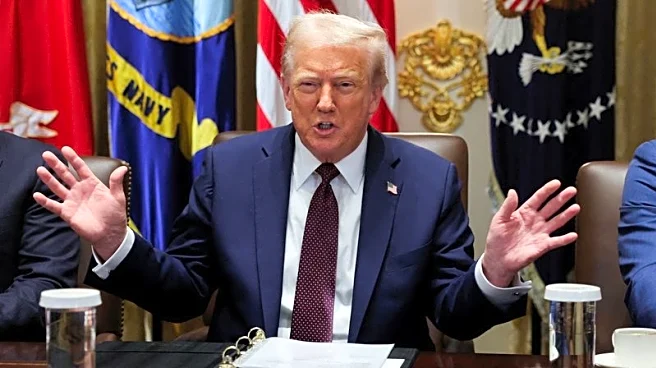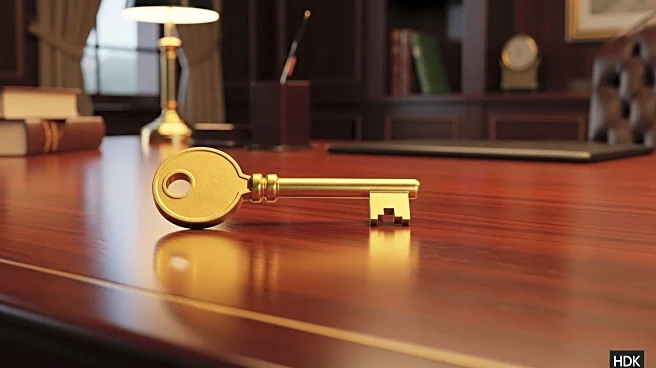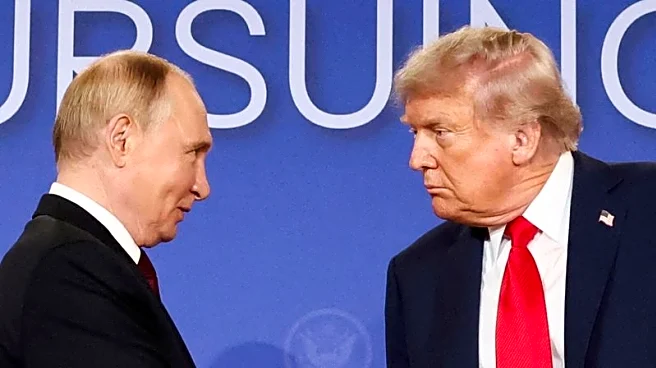What's Happening?
President Trump has made significant changes to the Oval Office during his second term, incorporating extensive gold gilding throughout the space. This includes gold curtains, vases, frames, and other decorative elements, creating a style that some describe as Rococo. The transformation has drawn criticism from various quarters, with some White House employees reportedly 'aghast' at the changes. Author Kate Andersen Brower has characterized the modifications as indicative of an 'imperial presidency,' suggesting that Trump is remaking the Oval Office in his own image. The changes are part of a broader effort by Trump to leave a lasting footprint on the White House, including plans for a large ballroom in the East Wing.
Why It's Important?
The alterations to the Oval Office have sparked a debate about the symbolism and appropriateness of such changes in a space that represents American democracy. Critics argue that the extensive use of gold reflects a royal image, contrasting with the historical intent of the White House as a symbol of democracy and accessibility. The changes may impact public perception of the presidency and the White House, potentially alienating those who view the modifications as excessive or out of touch with traditional values. The debate highlights broader concerns about the personalization of public spaces by political leaders and the implications for democratic institutions.
What's Next?
The future of the Oval Office's decor may depend on the outcome of the next presidential election. If a new president takes office, it is likely that the Oval Office will be redecorated to reflect their preferences, as has been customary. The staff is experienced in quickly transforming the space between administrations, suggesting that the current gilding could be replaced swiftly. However, permanent changes, such as the proposed ballroom, may have longer-lasting implications for the White House's structure and use.
Beyond the Headlines
The transformation of the Oval Office raises questions about the balance between personal expression and the preservation of historical and cultural symbols in government spaces. It also touches on the ethical considerations of using personal funds for public office renovations and the potential influence of private wealth on public institutions. The debate may prompt discussions about the role of aesthetics in political leadership and the impact of visual symbolism on public trust and engagement.
